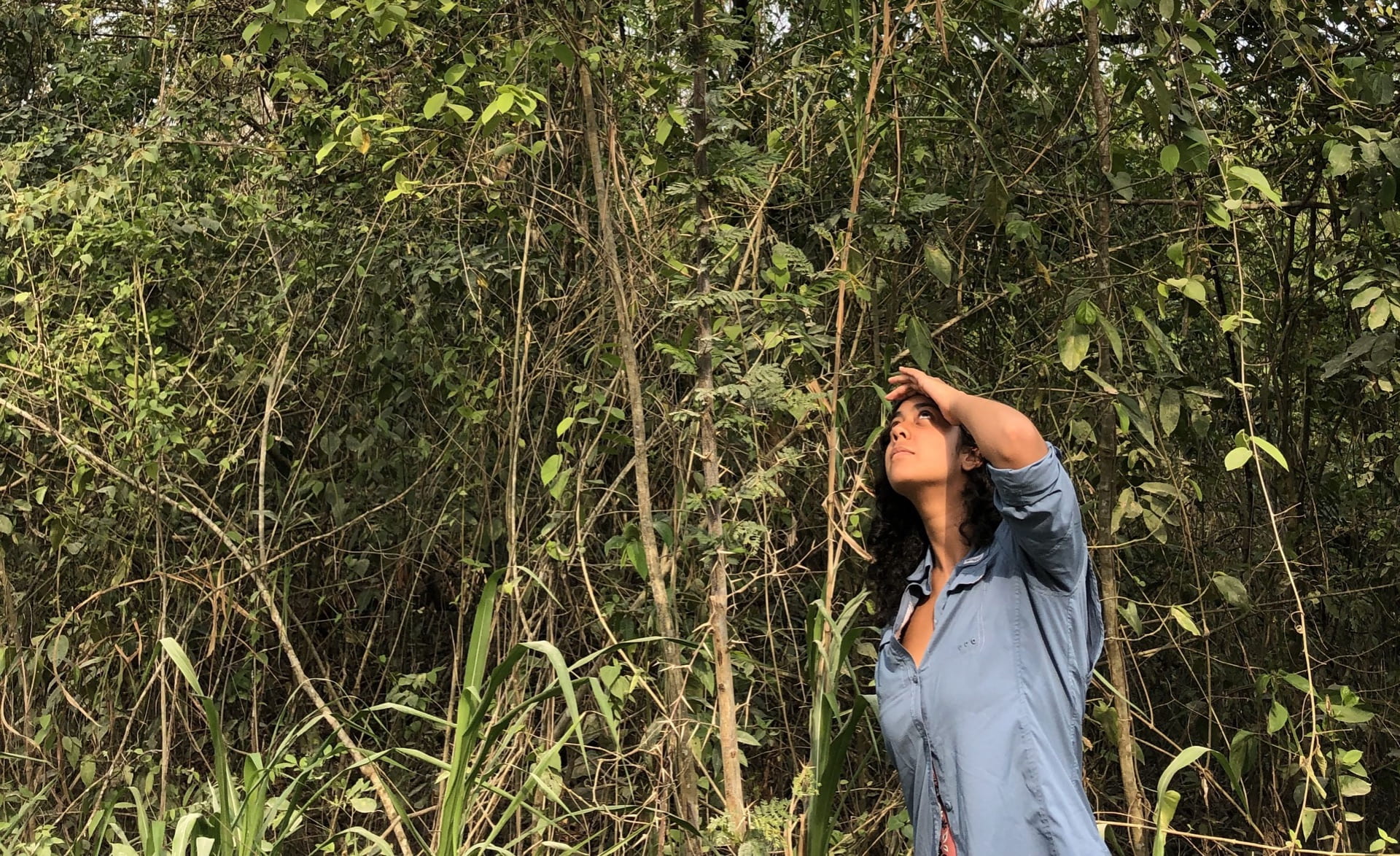Biology and philosophy double-major Savannah Seupaul spent time in Costa Rica this summer, collecting data for her honors thesis. She and her team hoped to collect nests from the yellow-olive flycatcher, to test them for antibacterial properties, but in the end the trip didn’t quite go as planned. Despite the setbacks, the Bodenhamer Fellow marveled at the opportunities provided by this experience; here, Savannah advises students to always pursue new opportunities, because they may lead to open doors you never thought you’d step through.
The yellow-olive flycatcher, a species of tropical bird, uses the black fibers of the fungus Marasmius to build its nest, and we want to know why. My hypothesis is that antibacterial properties may be a reason for this preference, which could provide an essential advantage for successfully raising offspring in the harsh, competitive tropical environment. Beyond learning more about the natural world, modern medicine could also make use of novel antibacterial sources.
This summer, the funding provided by the Short-Term Research Travel Grant made it possible for me to travel to northwestern Costa Rica with the hopes of collecting these black fiber nests. This is essential for my honors thesis project, as we need samples for testing in the lab. Spending time in the field also allowed for valuable observations about our bird species of interest and the natural location of these nests. I was joined in Costa Rica by Dr. Kannan, one of my research mentors. He is a distinguished ornithologist from the University of Arkansas at Fort Smith. He approached me with this project in mind, and leaping into this opportunity has already given me many chances for growth.
At the airport, we were greeted enthusiastically by our expert guide Estebon Biamonte. He was extraordinarily knowledgeable about local birds, and I have never before seen someone whistle bird song so well that they received responses from the bird that they were imitating. Estebon, as well as other locals that we met along the way, were excited to hear about a project that involves their local wildlife. Costa Rica has put wonderful effort into reforesting their country and building up their economy through responsible ecotourism. Their ecosystems are respected by people around the world as well as the people who call them home.
Despite all of the expertise in our corner, we were largely unsuccessful in finding nests. For this reason, we have decided to focus on testing with Belize nests only. Thankfully, we were able to guarantee ten nests from an earlier visit to Belize and will still be able to run our experiment. This may even strengthen our results by reducing the variation between our samples.
Going into this experiment, Dr. Kannan advised that there are no guarantees in field biology research. With all of our preparations for summer travel, there are no clear reasons why our experiences in Costa Rica would be so drastically different from our time in Belize. Both countries are similar in ecosystems and species, and even our itineraries were similar — we visited lowlands, mountains and rivers in each country. However, field research is unpredictable in many ways, and we are fortunate to still be able to continue.
We were not able to return with nests, but we were still able to add to our observations, and I was able to network with locals. The co-owner of a coffee farm focusing on sustainable agriculture offered me an internship. While I am there, I would be able to volunteer at a local school or health clinic. The latter would be a wonderful taste of tropical medicine, the profession I plan to pursue.
This has been the most remarkable trend made possible by my studies at the University of Arkansas: the opportunities that I am able to pursue keep opening up more doors to excel even further. I embarked on a study abroad program last summer where I met Dr. Kannan and was recruited for this project. Now, this grant funding has allowed me to pursue this research and has opened up yet another opportunity to learn about medical care in a new environment.
I will be back on campus in the fall to begin testing the nests for antibacterial properties. This summer will be spent acquiring materials, including the bacterial strains that will be used to measure these potential properties. As this project comes to a close in the next year, it leaves room for interesting follow-up work. I would be most interested in isolating species of Marasmius and growing them in the lab. This would eliminate the most possible outside variables during experimentation. It would be even better to go further and isolate the compound responsible for any antibacterial properties.
Overall, my travels to Costa Rica were invaluable in moving forward with my research. I was able to work side by side, all day, with excellent biologists and naturalists. I have returned home as a better researcher with an even stronger interest in tropical ecology.



